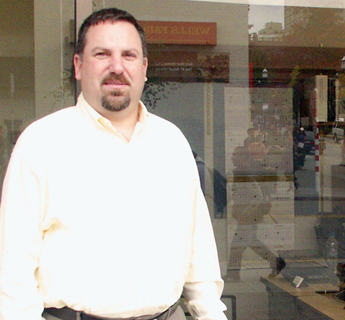Innovations
Perspectives on Quality with Michael Lanham
by Kyra Worrell
Michael Lanham joined Financial Management as the Director of Student Fiscal Services (SFS) in September of this year. He recently took a few minutes to share with me his initial impressions on Financial Management’s Quality program.
Kyra: You come from a strong background in Quality management – although more in the corporate sector than in higher education. How is the Quality program here in Financial Management different from the other programs you’ve worked with?
Michael: The main difference is the commitment of everybody to Quality in the organization – at least as far as the Executive Improvement Team (EIT) and SFS – I can’t speak as much for other departments within Financial Management (FM) because I just haven’t been here that long.
Everyone that I’ve encountered seems to understand the meaning of Total Quality Improvement, and its value…the entire process is the way it’s meant to be.
There is a strong, committed leadership that understands what is needed in the way of resources and also understands the holistic nature of Quality, especially in terms of people. The leadership here understands that Quality can equal change. There is a commitment to diversity here as well, and a commitment to addressing how employees feel in the work place.
There’s a big difference between this and what I’ve seen in other organizations where I’ve worked. There Quality is really seen as the “flavor of the month”. Here we have a permanent systemic fix vs. the “big band-aid” I’ve seen at other places – a band-aid that will eventually fall off and then we’re back to square one. These other organizations aren’t thinking the concepts all the way through and/or they don’t have the ability to successfully carry it all the way through. All these organizations pursuing the goals of Total Quality Management – including FM – have similar constraints and barriers to overcome. There’s always the work that needs to be done right now vs. the work that is going to be done through process improvement. And there are always outside issues, like personnel issues – the major difference here is that the leadership recognizes these issues as a whole and addresses them as a whole.
Kyra: What kind of training do you have do you have in Quality work?
Michael: My experience and training with Quality work comes from many different sources. One such source is Goldratt’s “Theory of Constraints” – the constraints in manufacturing can apply here. I like to drawn upon many different tools. I’ve worked with the balanced scorecard – FM’s dashboard is one version. I’m interested in Process based management.
Kyra: I’ve heard you are a Six-Sigma Black Belt. What does that mean?
Michael: The Black Belt part comes from Karate and other martial arts, and it has a similar meaning here: you start at a white belt and move up – once you get to black belt you have several levels. Six Sigma is a specific methodology or approach to eliminating defects. You want to look at the level of defects in a process: level 1 is bad, level 6 is good. A normal company will be about a level 3 -- roughly about 150, 000 errors per million; level 6 is about 1 error per million.
Kyra: Very interesting -- it sounds like another article!
Michael: Yes, there’s a lot there – it may be another article! |



